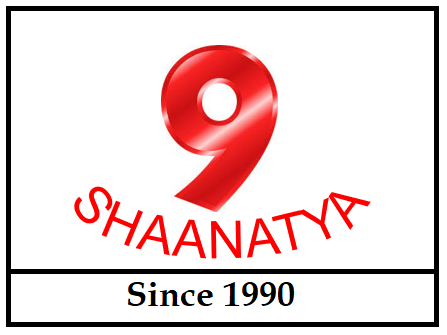(1) “NEW YEAR DATE VARIATIONS”
English/Christian New Year is celebrated on January 01
Why “English/Christian New Year” reason shared below —
Many cultures/civilizations that don’t celebrate New Year’s Day on Jan 1 :
*(1) Jews – Rosh Hashanah is the Jewish New Year celebrated on September or October.
*(2) Assyrias/Assyrians – Kha b’ Nissan is the cultural Assyrian New Year day celebrated on April month at the beginning of spring.
*(3) Ethopia – Enkutatash is the Ethiopian New Year day celebrated on nearly September 11th based on the Gregorian calendar.The Ethiophian calendar follows the Coptic one.
*(4) Cambodia – Choul Chnam Thmey is the three days traditional Lunar New Year,which usually falls on nearly April 13th or 14th.
*(5) Sri Lanka – The Sri Lankans New Year(Sinhalese New Year) Aluth Avurudda is celebrated on nearly April 13 or 14 based on solar movement .
*(6) Iran – The Iranian New Year, called Nowruz (Iranian New Year), which usually occurs on March , marking the start of the spring season,widely celebrated among Iranians and other ethnic groups
*(7) Zaroastrians – The Zaroastrian New Year which is the same as the Iranian New Year, Nowruz, and is celebrated by the Parsis in India and by Zoroastrians and Persians across the world.
*(8) Central Asian countries, including Kazakhs, Uzbeks, and Uighurs there is known as Nauryz. It is usually celebrated on nearly March 22.
*(9) Nepal – Bikram sambat (BS) / Nepal Sambat calendars are used in Nepal. So new year falls around the second week of April or on November.
*(9a) Tibetian – According to Tibetian Calendar. Ghyalpo losar is used to named, the new year of this calendar. The new year of Tibetian calendar falls in February.
*(10) Thailand – Songkran is Thailand’s New Year day that is celebrated for two days starting April 13th , based on the Buddhist or Hindu solar calendar.
*(11) Mongolia – Tsagaan Sar is the Mongolian Lunar New Year day based on the Mongolian lunar calendar.
*(12) Vietnam – The Vietnamese New Year is the Tết Nguyên Đán which most times is the same day as the Chinese New Year based on lunar calendar which falls on January or February.
*(13) Korea – The Korean New Year is a Seollal or Lunar New Year’s Day based on the Korean lunar calander celebrated on January or February.
*(14) China – The Chinese New Year, also known as the Lunar New Year, occurs every year on the new moon of the first lunar month(usually first week of February), about the beginning of spring (Lichun) falls any time between January and February.
*(15) Bangladesh – New year eve in Bangladesh falls on nearly April 14 at the first day of the month
*(16) Myanmar – The new year is celebrated during 13 to 15 April. The people of Myanmar celebrate fiercely on Tijan.
*(17) Japan – New Year on nearly 5 January
*(18) India – Falls nearly March/April every year.Every State of India celebrates New Year as per local calendar on 14th or 15th April. Ugaadhi (Telegu and Kannada New Year) falls on April 8 nearly ; Puthandu (Tamil New Year) nearly April 14 ; Diwali (Marwari and Gujarati New Year Day) nearly October 30 ; Vaisakhi is celebrated as the New Year day by the sikhs on April 13th to mark the start of spring ; people of Tamil Nadu celebrate Pongal here ; Most Hindus celebrate New Year’s Day during the first day of the first Hindu month, Chaitra.
*(19) Balinese and Javanese people – Nyepi (day of rest/Balinese New Year) that usually falls in mid-March because they follow the Saka calendar (which is lunar based).
*(20) UAE, Saudi Arabia, & other GCC countries – Raʼs as-Sanah al-Hijrīyah (Islamic New Year) nearly October 3.Raʼs as-Sanah al-Hijrīyah is the Islamic new year that marks the first day of the Muslim calendar. It celebrates Hijra or emigration of Mohammed from Mecca to Medina.
*(21) Australia – Aboriginal Murador New Year(Western Australian Aboriginal tribe) nearly October 30
*(22) Orthodox New Year falls on 14th of January (as you may know) followed by orthodox Russians, Serbians, Macedonians, Belarusians, Ukrainians and Bulgarians celebrate it.
*(23) Early Roman civilisation (pre-christian era & pre- Julius Caesar era) which usually occurred on March/April , marking the start of the new season,widely celebrated among Romans
*(24) March 1 was the first day of the numbered year in the Republic of Venice until its destruction in 1797
*(25) Russia – From 988 until 1492 (Anno Mundi 7000 in the Byzantine calendar) ; September 1 was used in Russia from 1492 (A.M. 7000) until the adoption of the Anno Domini notation in 1700 via a December 1699 decree of Tsar Peter I
